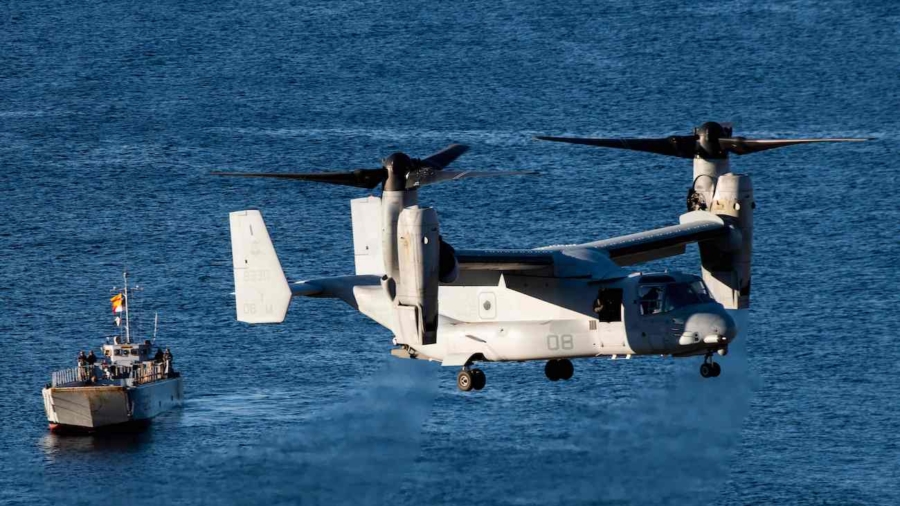The U.S. Marine Corps Command ordered a safety review following the crash of a V-22 Osprey aircraft crash during a military drill in Australia last Sunday, in which three Marines lost their lives and 20 were hospitalized.
“Marines, when we have any training mishap, we must conduct a thorough and harsh review of our processes to confirm that our culture of safety is still strong,” the memo from Assistant Commandant of the Marine Corps General Eric M. Smith opened.
“Safety is not a peacetime concern; it is a warfighting issue,” the General continued. “Every aspect of training from safe weapons handling to proper ground guides to the ruthless adherence to standards in our aircraft and vehicles, demonstrates that we are indeed professional warriors.”
The safety review applies to all organizations, uniformed and civilian, within the Marine Corps.
According to the memo, the military loses “nearly a platoon’s worth” of Marines and Sailors to training accidents and off-duty mishaps each year. A platoon, depending on the unit, consists of several dozen soldiers.
Commanders and supervisors at all levels have until Sept. 15 to review and document their unit’s approach to safety, to identify and mitigate the specific risks their respective units are exposed to.
Marine Commanders have also been instructed to collect feedback and suggestions from their units, including junior personnel, on how to reduce future hazards.
“Candor is expected and required,” the memo said.
Though not much is known about the reason for the most recent V-22 crash, the memo specifically instructed commanders to discuss the balancing of risks associated with fatigue and lack of sleep with their units.
The V-22 Osprey, a tiltrotor aircraft capable of flying like a helicopter or an airplane depending on the position of its rotors, has gathered a nasty reputation in the military on account of its safety record.
The crash, on Melville Island in the northern territories of Australia last Sunday, was the tenth lethal accident involving an Osprey craft since 1992, bringing the number of fatalities with the contested aircraft to 53.
Twenty marines survived the crash. All were taken to hospital, with five in critical condition; twelve were allowed to leave hospital within days.
“For a chopper that crashes and catches fire, to have 20 Marines that are surviving, I think that’s an incredible outcome,” a local Police Commissioner who assisted in the rescue operation noted.
A 2020 Military Aviation Safety report identified a lack of adequate flight hours and insufficient personnel training as some of the main reasons behind U.S. military aircraft accidents.
According to Gen. Smith, the Marine’s Safety Division also created new training requirements all units must pass no later than Sept. 22.

